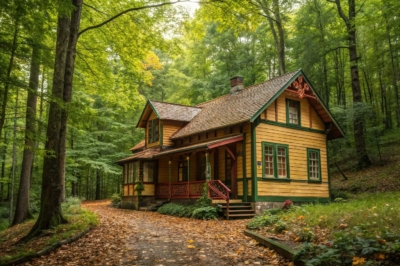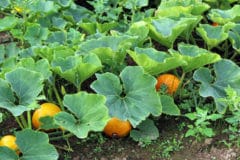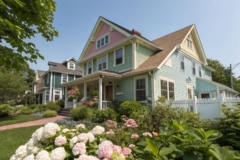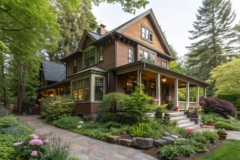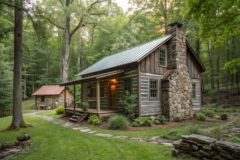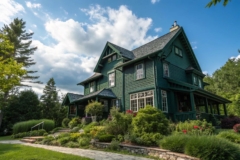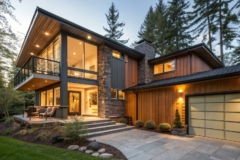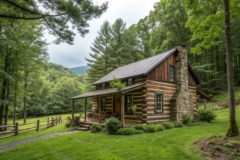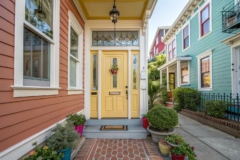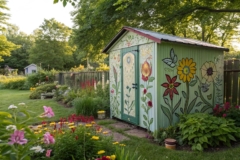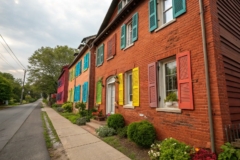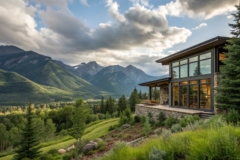1. Dark Forest Green for Depth

A deep forest green can give your cabin a sense of depth and mystery, like it’s hiding secrets within its walls. It’s a color that truly complements the great outdoors.
Useful items to consider:
- Exterior Green Paint: Transform your cabin with rich, deep green paint to blend beautifully with nature’s backdrop.
- Green-Stained Wood Finish: Elevate your cabin’s natural charm with a dark green wood stain that exudes rustic elegance.
- Forest Green Outdoor Furniture: Complement your cabin exterior with green outdoor furniture for the perfect cohesive look.
2. Playful with Pastels
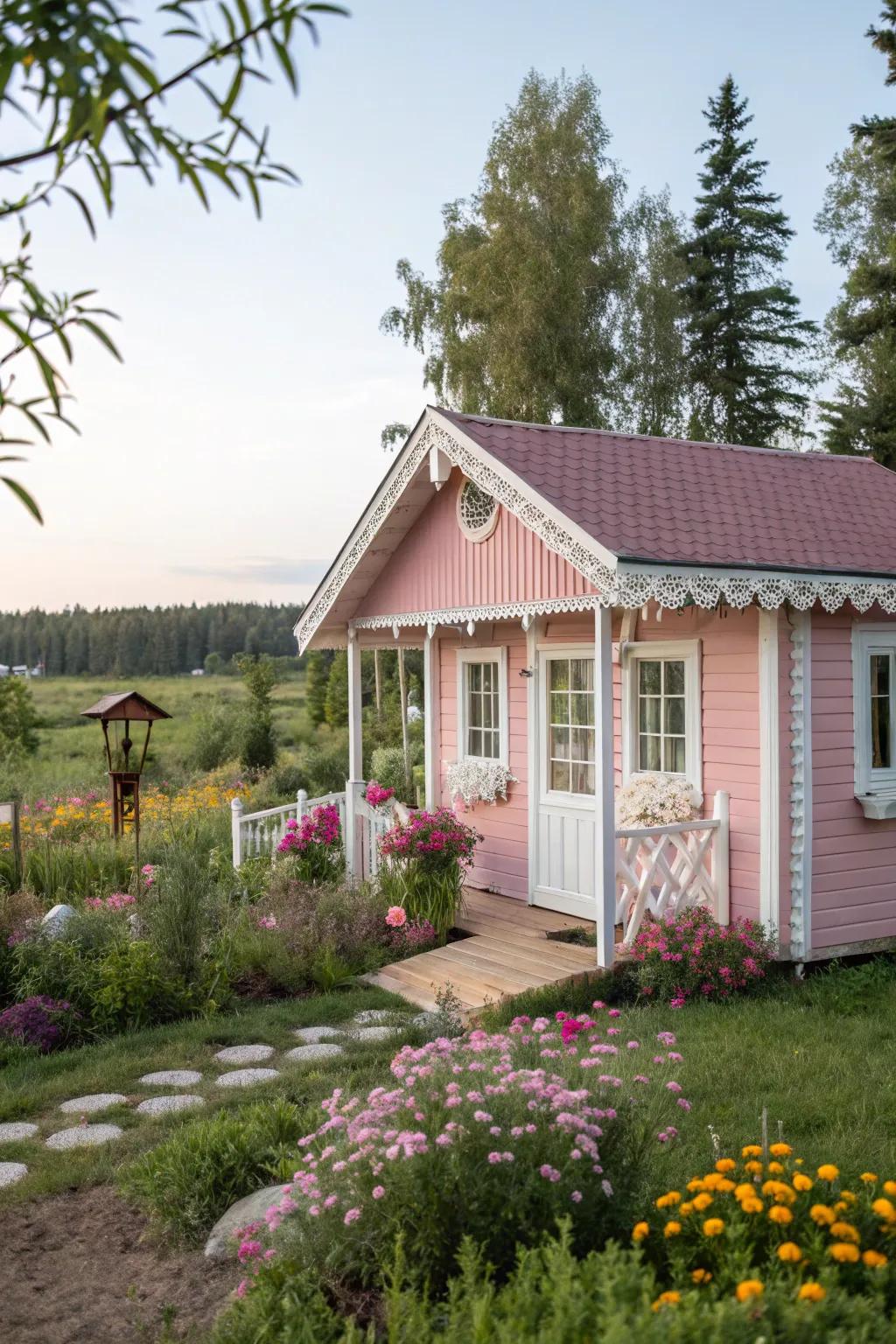
Pastel shades can add a playful twist to your cabin’s exterior. Imagine a soft pink or lavender cabin—it’s unexpected but oh-so-delightful.
These products might be useful:
- Exterior pastel paint set: Transform your cabin with a pastel paint set, creating a delightful, unique exterior aesthetic.
- Weatherproof pastel wood stain: Enhance and protect your cabin’s wood with a durable, weatherproof pastel wood stain.
- Decorative pastel garden lights: Brighten up your cabin pathway with charming pastel garden lights, adding a touch of whimsy.
3. Seasonal Influence with Autumn Shades

Embrace the changing seasons with autumnal hues like burnt orange or deep gold. These colors echo the beauty of fall and give your cabin an ever-welcoming feel.
Give these a look:
- Exterior Paint in Burnt Orange: Transform your cabin with burnt orange paint for a warm autumnal embrace.
- Deep Gold Trim Paint: Add depth to your cabin with deep gold trim, echoing autumn’s golden hues.
- Seasonal Outdoor Rug: Enhance your porch with a fall-themed rug, welcoming warmth for your guests.
4. Stone and Wood Blend
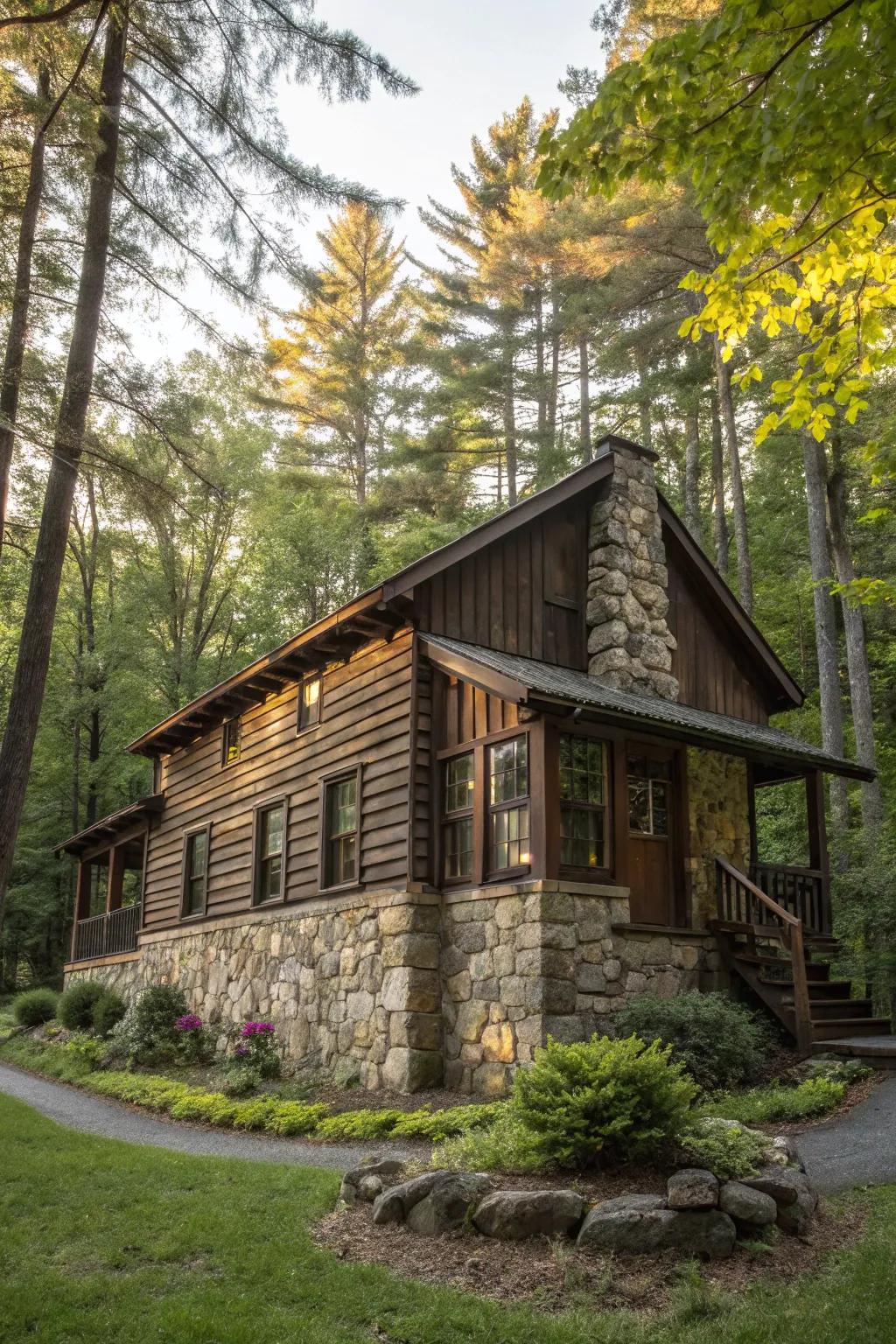
Pairing stone accents with wooden exteriors can create a beautiful blend of textures. I often suggest using stone on lower walls and wood above for a grounded yet airy look.
Some handy options:
- Exterior Wood Stain: Enhance your wooden exteriors with a rich stain that adds warmth and character.
- Natural Stone Veneer: Install elegant stone veneers to create timeless, rustic charm for your cabin’s exterior.
- Weatherproof Sealer for Stone: Protect and maintain stone accents with a durable, clear weatherproofing sealer.
5. Charming in Charcoal
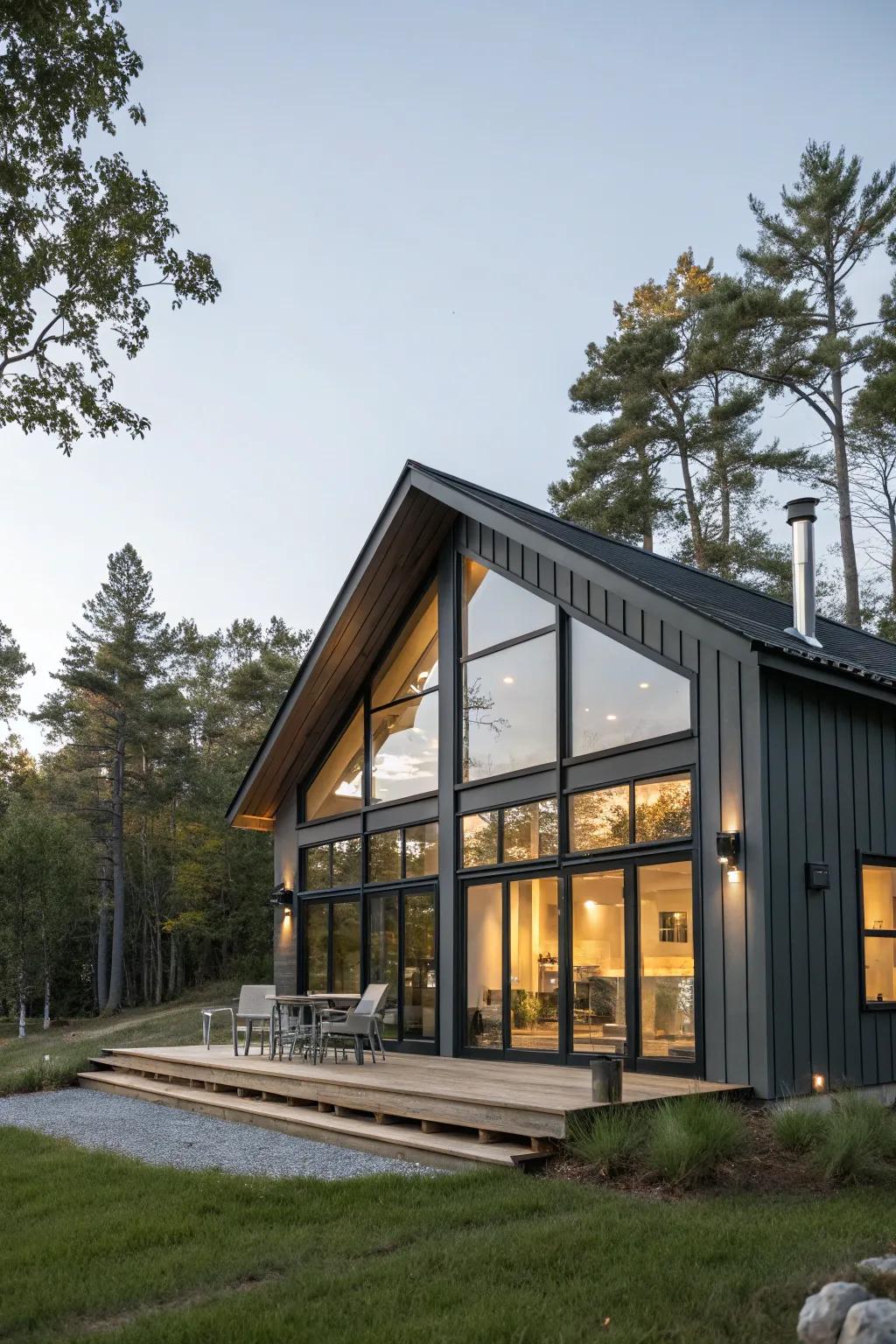
Charcoal gray is ideal for a sleek and modern cabin look. It’s a color that says you’re stylish and not afraid to show it.
May just do the trick:
- Charcoal Exterior Paint: Elevate your cabin’s style with sleek charcoal paint. Modernize your exterior effortlessly.
- Weather-Resistant Outdoor Wall Lights: Add elegance and safety to your cabin with stylish outdoor wall lights.
- Durable Outdoor Furniture Set: Complete your cabin’s exterior with a stylish and durable outdoor furniture set.
6. Embrace Natural Wood Tones
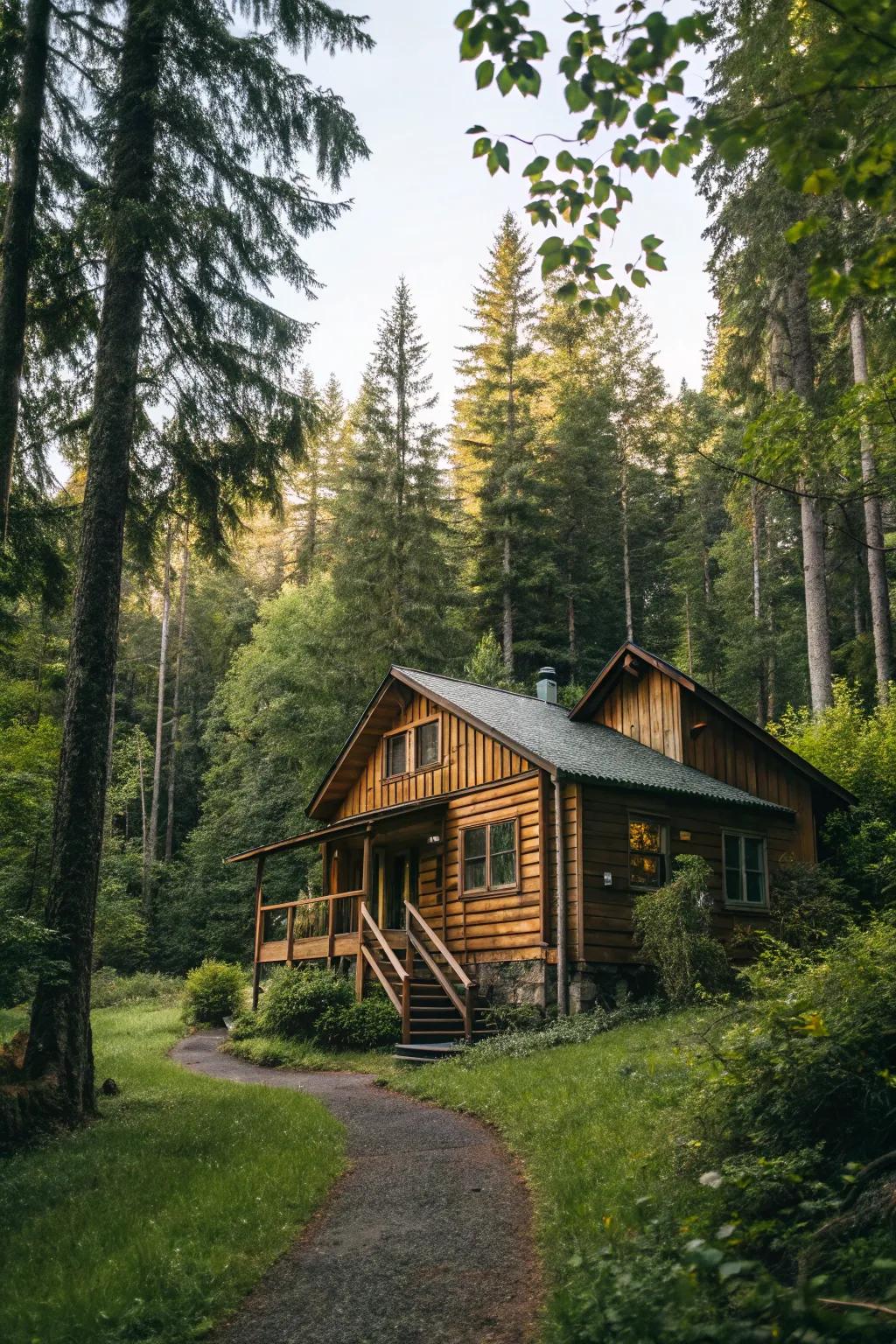
I’ve always found that natural wood tones offer a timeless elegance that blends seamlessly with the surrounding forest. A warm, honey-stained wood exterior can highlight your cabin’s rustic charm while letting the natural beauty of the wood shine through.
A few things you might like:
- Outdoor Wood Stain and Sealer: Enhance your cabin’s rustic charm with a premium wood stain that preserves and beautifies.
- Natural Wood Protector: Protect your cabin’s exterior with a wood protector that highlights its natural beauty.
- Eco-Friendly Wood Finish: Opt for an eco-friendly wood finish to give your cabin a sustainable and polished look.
7. Sophisticated Slate Gray
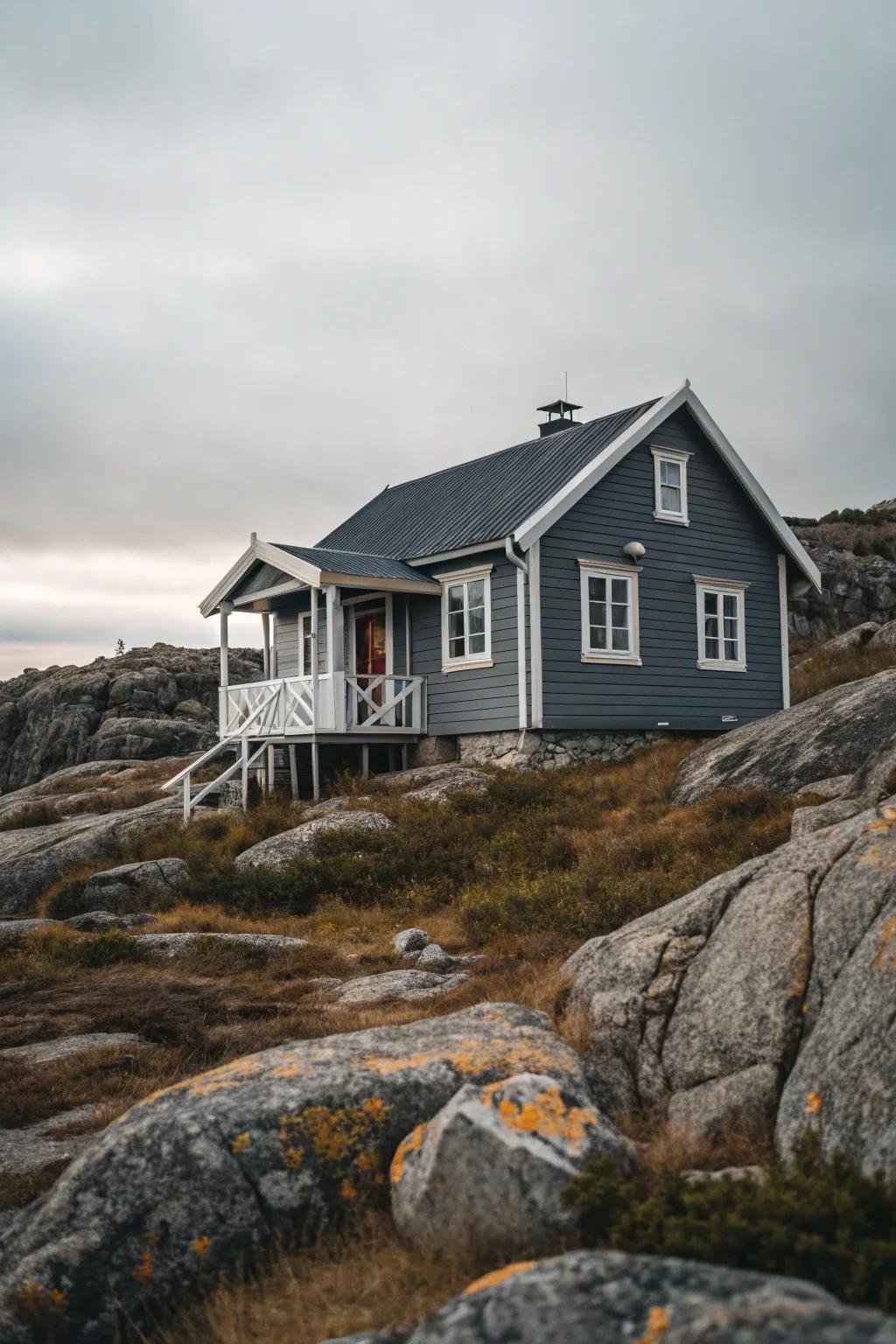
Slate gray offers a sophisticated yet understated look. I’ve seen it used on cabins to create a modern vibe while still being in harmony with the natural landscape.
Check these products out:
- Exterior Slate Gray Paint: Enhance your cabin with durable slate gray paint, blending style with natural surroundings.
- Weatherproof Sealant for Outdoor Use: Protect your cabin’s exterior with a robust sealant, safeguarding against weather elements effectively.
- Exterior Painting Brushes and Rollers Set: Achieve a flawless finish on your cabin with high-quality painting tools for exterior projects.
8. Classic White for Timeless Appeal
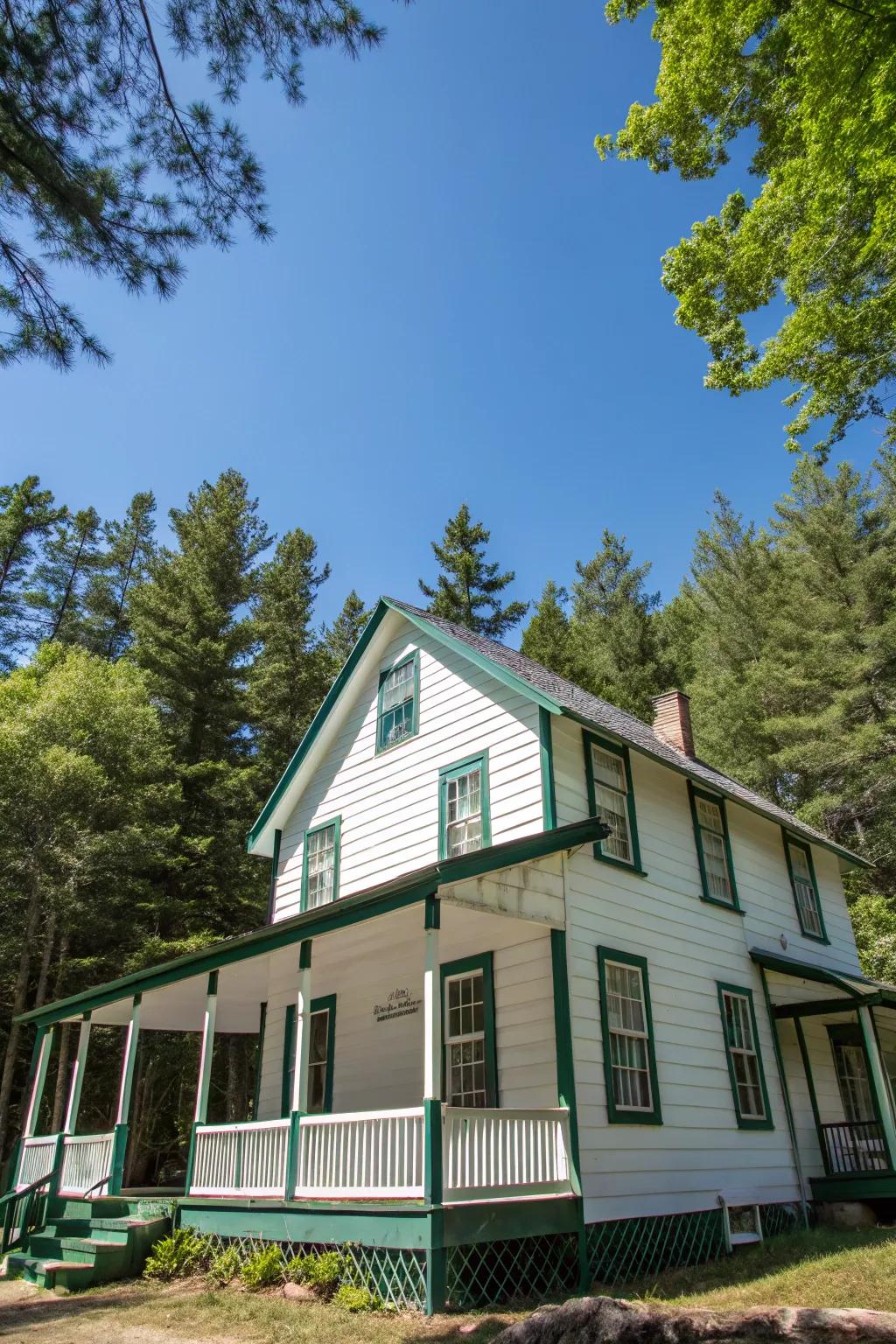
There’s something undeniably charming about a classic white cabin. It’s like a blank canvas that highlights every detail of the surrounding scenery.
You might give these a try:
- Outdoor White Paint for Wood Surfaces: Upgrade your cabin with durable white paint, ensuring a pristine look that lasts seasons.
- Paint Roller Kit with Extendable Handle: Achieve a smooth finish effortlessly with this versatile roller kit for hard-to-reach places.
- Exterior Wood Primer: Prepare your cabin surface with a reliable primer, enhancing paint adhesion and durability.
9. Modern Black for Drama
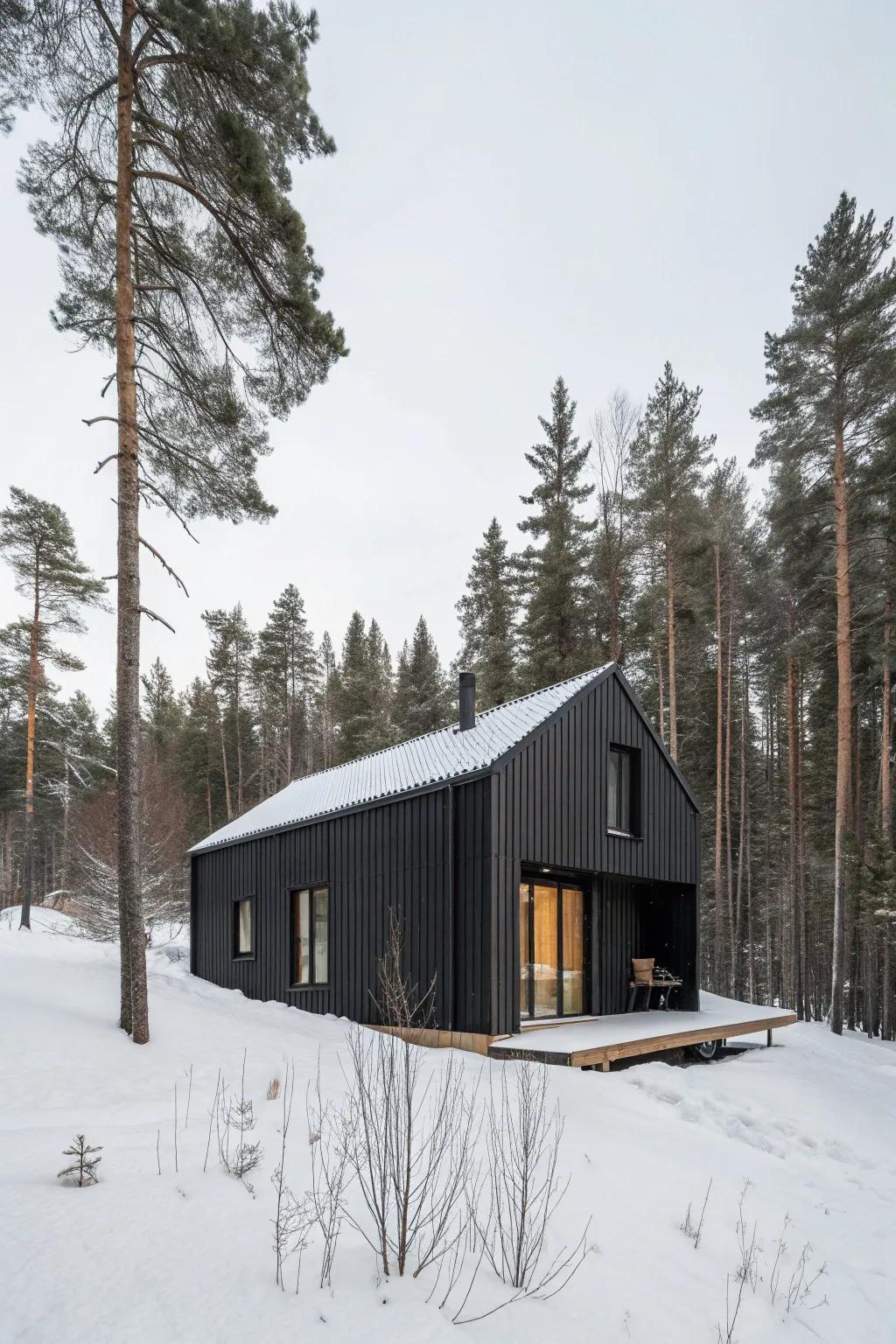
If you’re after something more contemporary, try a modern black exterior. I once saw a cabin painted in a matte black nestled in snow-capped trees—it was breathtakingly dramatic.
Try these:
- Matte Black Exterior Paint: Transform your cabin’s look with this sleek matte black, perfect for a dramatic effect.
- Weatherproof Exterior Wood Sealant: Safeguard your cabin’s exterior against weather with this durable wood sealant.
- High-Coverage Paint Roller Set: Achieve a smooth and even finish using this high-coverage roller set, ideal for large surfaces.
10. Add Contrast with Bold Trims

Pairing a deep cabin color with a bold trim can really make architectural details pop. I tried a dark cedar body with cream trims on my friend’s cabin, and it created such a delightful contrast.
Might be a good match:
- Exterior Paint Combo Set: Achieve striking contrast with a dark cedar body and cream trim combination for your cabin.
- Outdoor Paintbrush Kit: Ensure smooth and even application of bold trim colors with this versatile brush set.
- Weatherproof Exterior Caulk: Seal and protect cabin trims perfectly with durable weatherproof caulk for long-lasting beauty.
11. Brighten with Light Blue
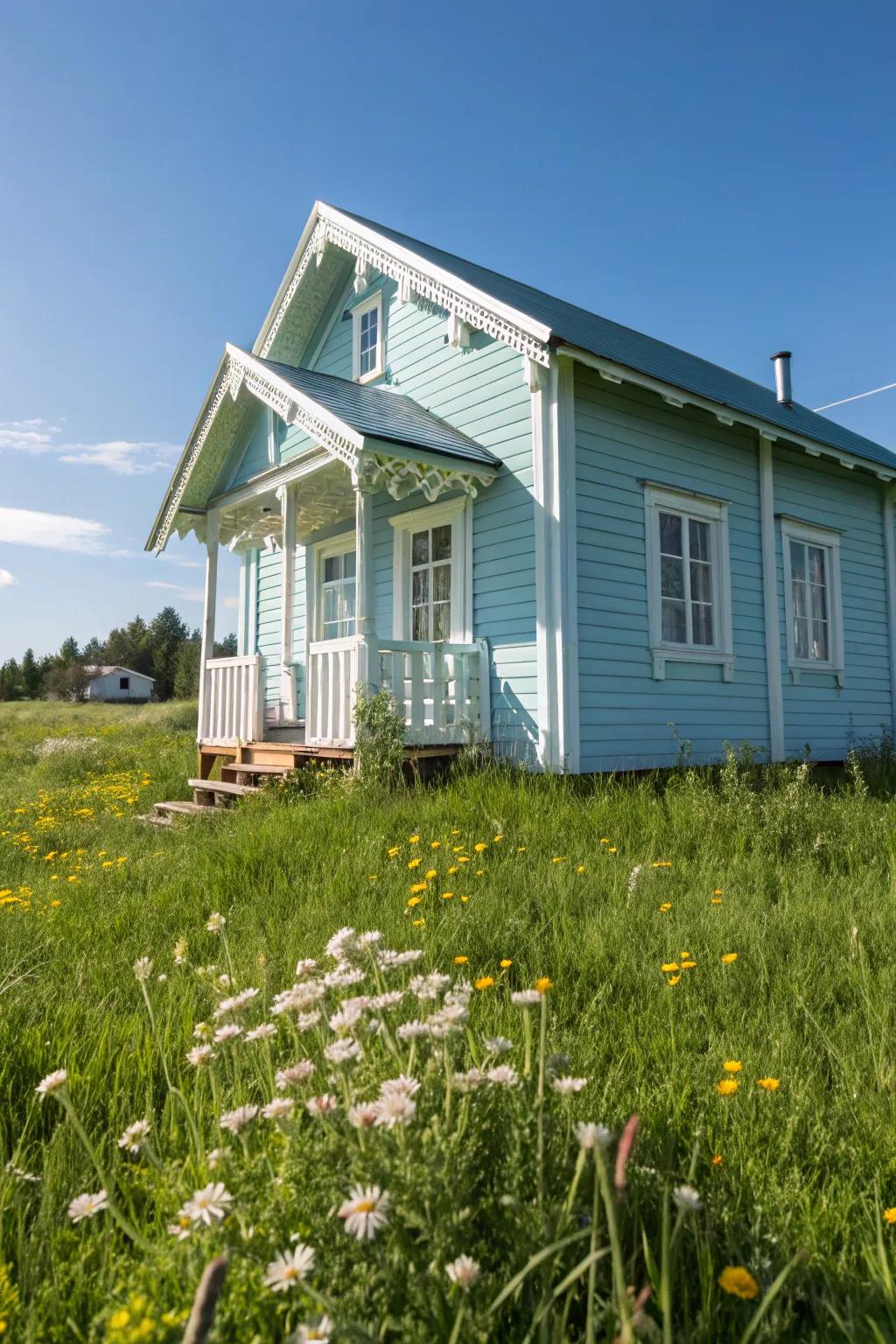
For a softer look, a light blue can make your cabin feel like a tranquil retreat. It’s like bringing a piece of the sky down to earth.
A few helpful options:
- Exterior Light Blue Paint: Transform your cabin into a serene escape with fresh, tranquil light blue exterior paint.
- Eco-Friendly Exterior Paint: Choose eco-friendly paint to create a beautiful, sustainable, and calming light blue cabin exterior.
- Paint Brushes for Exterior Use: Achieve a smooth, professional finish on your cabin with high-quality exterior paint brushes.
12. Vibrant Yellow for a Pop
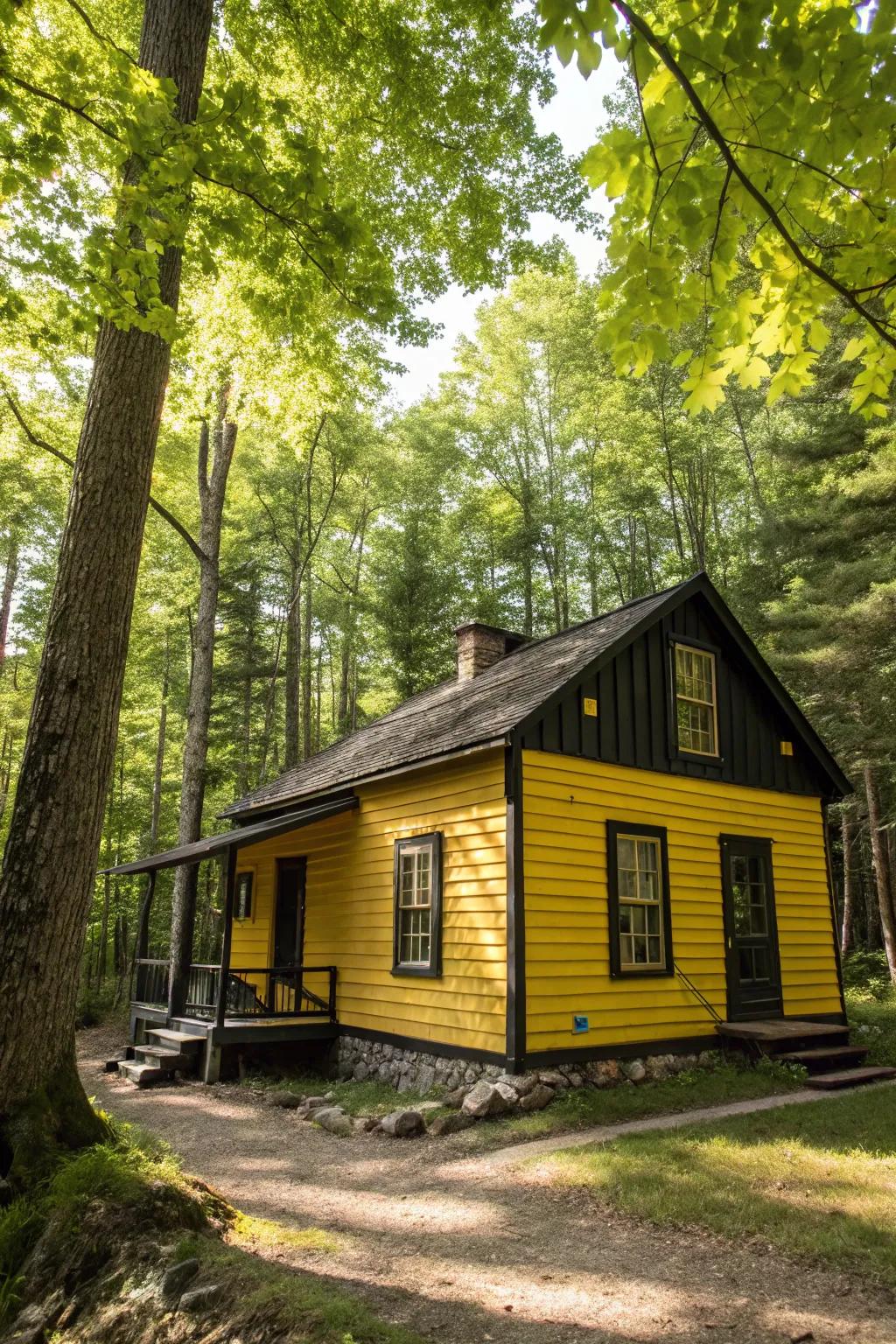
For the bold at heart, a vibrant yellow can inject life and joy into your cabin’s exterior. It’s like a burst of sunshine amidst the trees, and who doesn’t love a bit of sunshine?
Maybe worth checking out:
- Outdoor Yellow Exterior Paint: Brighten your cabin with vibrant yellow paint, creating an eye-catching exterior bursting with joy.
- Weatherproof Paint Primer: Prepare your surfaces with primer for a smooth, long-lasting vibrant yellow finish.
- High-Quality Paint Brushes Set: Achieve seamless application with quality brushes, ensuring an even and professional look.
13. Warm Beige for Subtle Elegance
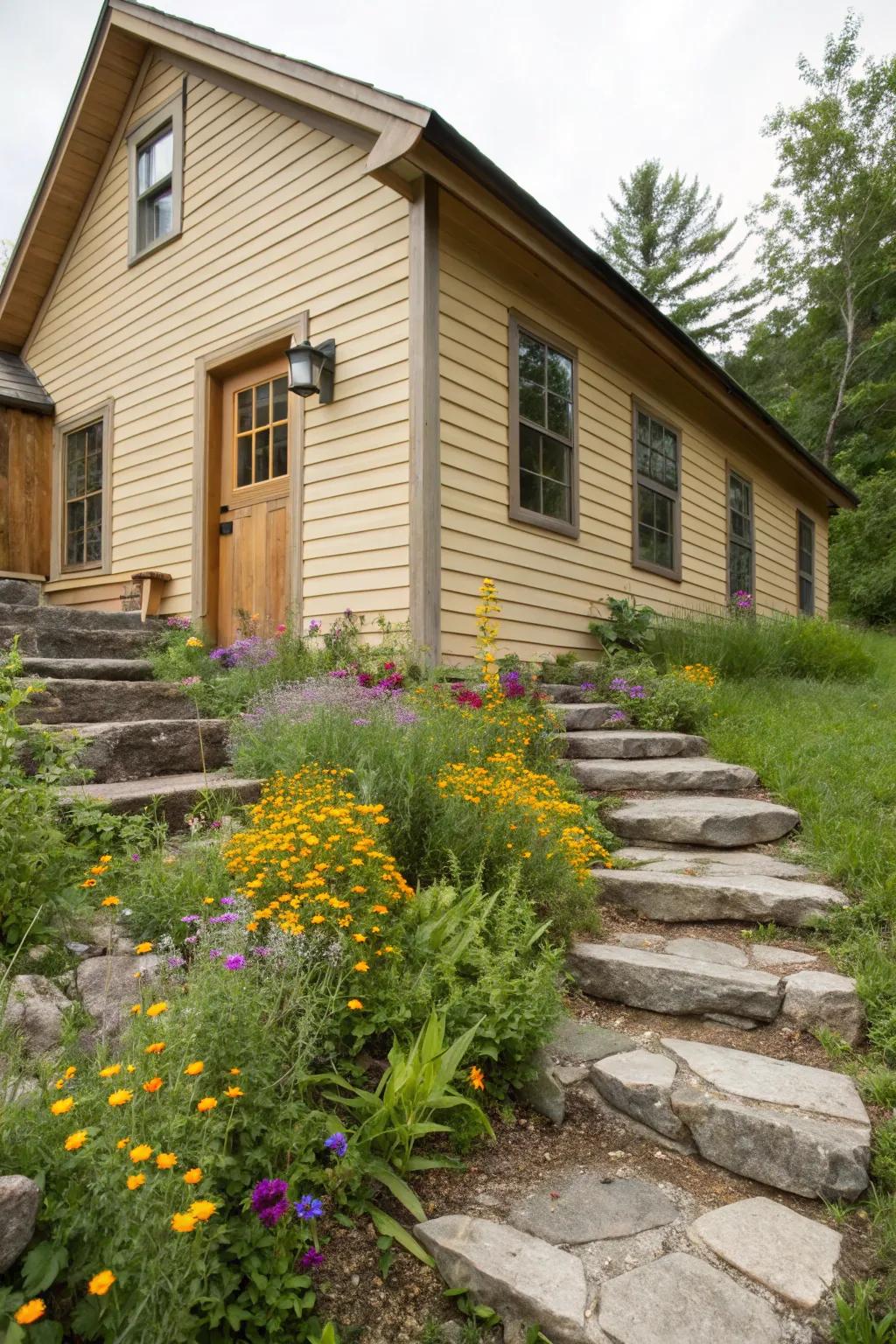
A warm beige can give your cabin a subtle, elegant look that complements any landscape. It’s a color I often recommend for those who want a neutral, timeless appeal.
Items that may come in handy:
- Beige Exterior Paint: Refresh your cabin’s look with warm beige paint, achieving timeless elegance and subtle allure.
- Weatherproof Paint Sealant: Protect your newly painted cabin with weatherproof sealant, ensuring longevity and durability.
- Natural Fiber Paintbrush Set: Achieve a smooth finish with a natural fiber paintbrush set, ideal for detail work.
14. Terracotta Tones for Warmth
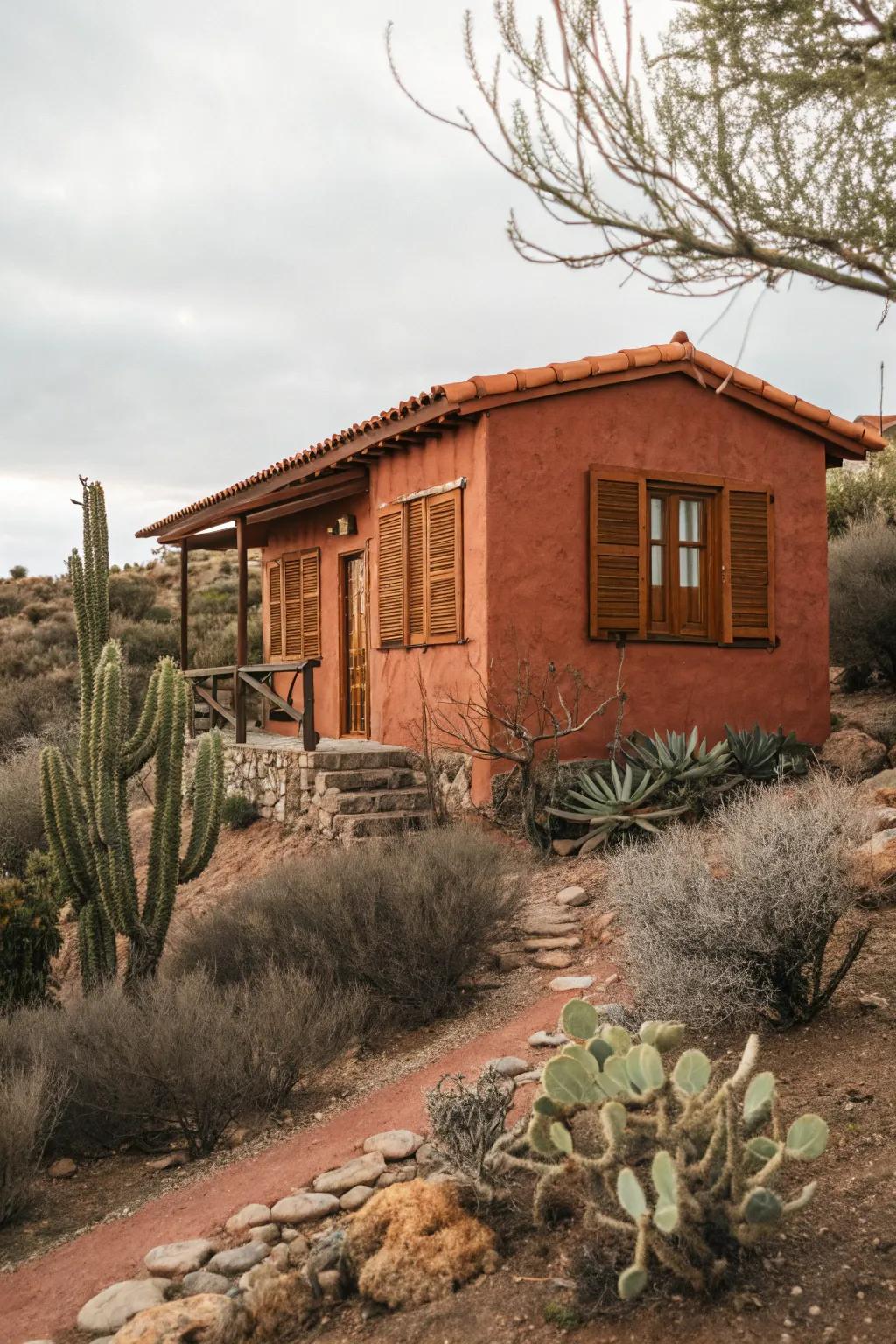
Terracotta tones bring a cozy warmth to any cabin, reminiscent of sunbaked clay and rustic landscapes. It’s a color that feels like a warm hug every time you see it.
Possibly helpful picks:
- Terracotta Outdoor Paint: Enhance your cabin’s warmth with high-quality terracotta paint that exudes rustic charm.
- Wooden Shutter Stain: Revitalize your wooden shutters with a robust stain that complements terracotta hues perfectly.
- Earth Tone Paving Stones: Add character to your pathway with durable, earth-tone paving stones for a warm, inviting look.
15. Go for Earthy Greens
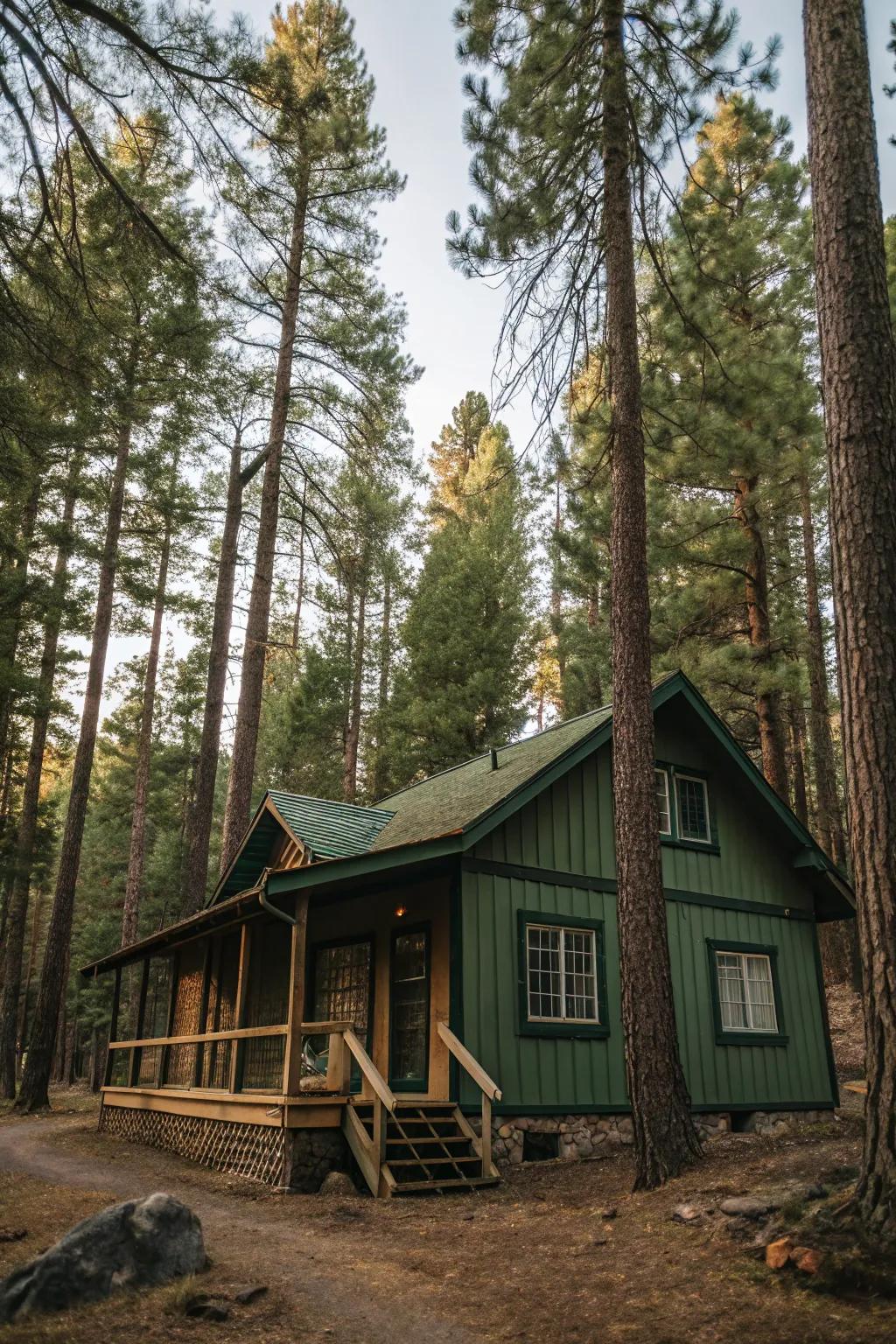
If you want your cabin to melt into its surroundings, earthy greens are your best bet. I’ve seen cabins painted in mossy greens, and they always look like they belong right there among the trees.
These products might help:
- Exterior Green Paint: Transform your cabin with earthy green paint, blending beautifully with the natural surroundings.
- Eco-Friendly Wood Stain: Enhance your cabin’s natural appeal with eco-friendly wood stains in harmonious green shades.
- Outdoor Green Lighting Fixtures: Complement your earthy green cabin with outdoor lighting fixtures for a cohesive natural look.
16. Soft Taupe for a Gentle Touch
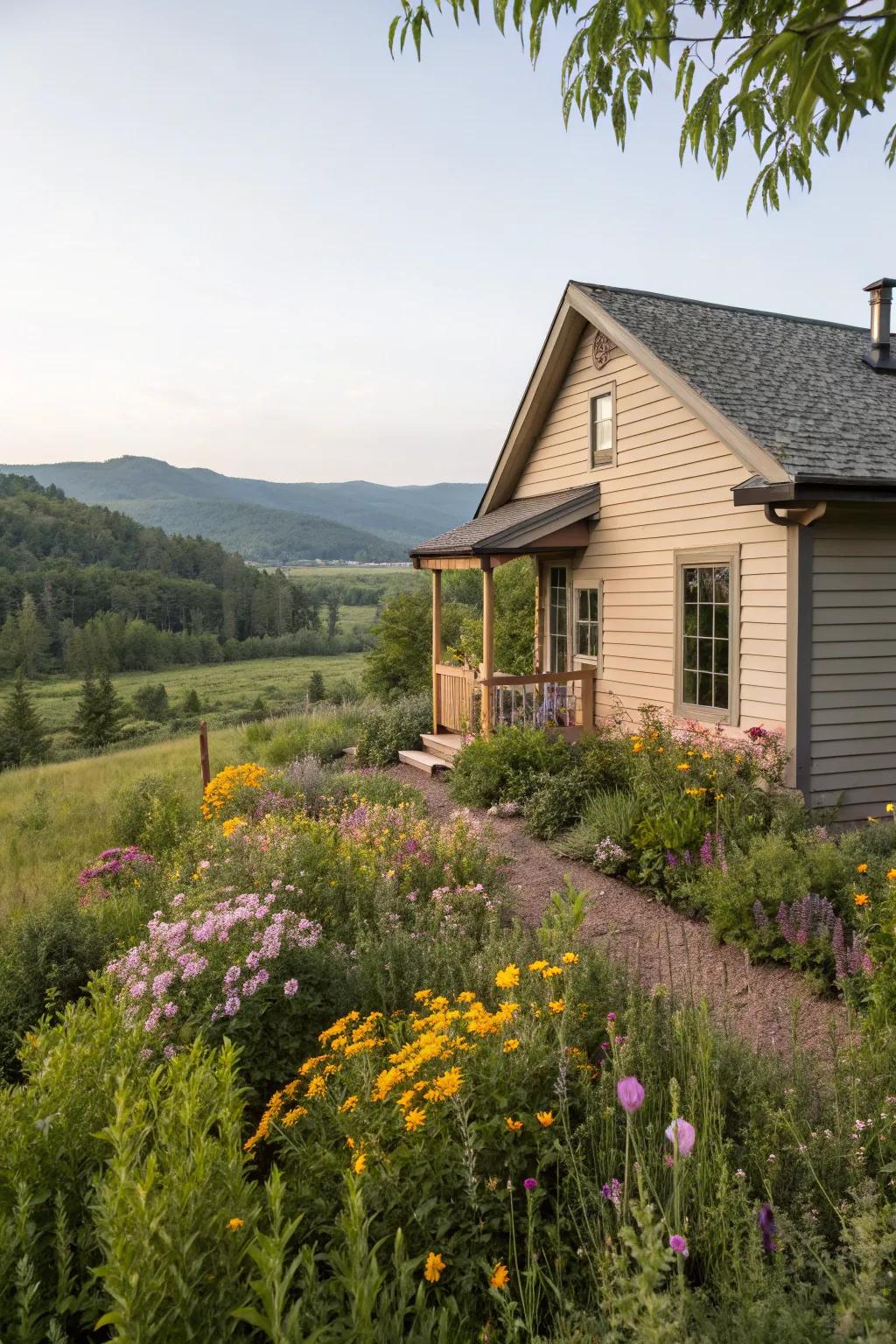
For a gentle, inviting look, soft taupe is a winner. It’s neutral, calming, and beautifully enhances any natural setting.
You might like:
- Exterior Soft Taupe Paint: Refresh your cabin with soothing soft taupe paint, perfect for an inviting aesthetic.
- Outdoor Paint Brushes Set: Achieve a flawless finish on your cabin’s exterior with quality outdoor paint brushes.
- Paint Roller Kit for Exterior Surfaces: Ensure even coverage on larger areas with a complete exterior paint roller kit.
